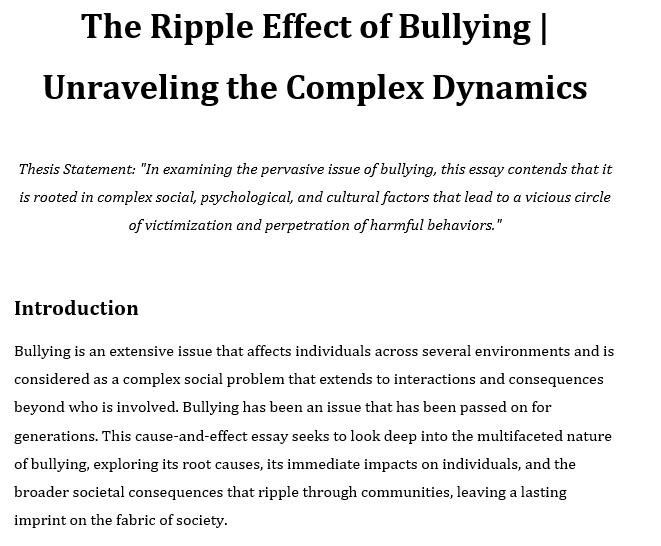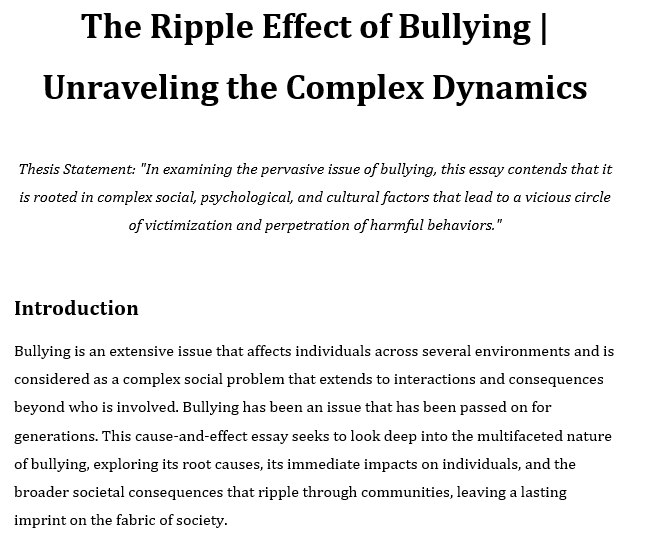The Domino Effect of Global Warming Unraveling the Environmental Tapestry
Thesis Statement: “The overarching consequences of global warming manifest through the melting of polar ice caps, rising sea levels, disruptions in weather patterns, and the alarming loss of biodiversity, emphasizing the imperative for immediate, concerted efforts to mitigate climate change and pave the way for a sustainable future.”
Cause of Greenhouse Gas Emissions
The primary cause of global warming lies in the relentless emission of greenhouse gasses (GHGs) into the Earth’s atmosphere. Human activities, predominantly the burning of fossil fuels for energy, deforestation, and industrial processes, have exponentially increased the concentration of GHGs, such as carbon dioxide (CO2) and methane (CH4). These activities release vast amounts of previously sequestered carbon into the atmosphere, disrupting the natural balance that had existed for centuries.
Effects of Greenhouse Gas Emissions
● Rising Global Temperatures
The accumulation of GHGs traps heat in the Earth’s atmosphere, leading to a rise in global temperatures. The consequences of this warming are far-reaching, impacting weather patterns, sea levels, and the overall stability of ecosystems. As the Earth heats up, it sets in motion a series of cascading effects on the environment.
Glaciers and polar ice caps begin to melt at accelerated rates, contributing to the alarming increase in sea levels. This, in turn, poses a significant threat to coastal areas and low-lying islands, where communities face the risk of submersion and loss of habitat.
● Intensification of Heatwaves and Extreme Heat Events
The relentless emission of greenhouse gasses by human activities, notably the burning of fossil fuels, contributes significantly to the warming of the Earth’s atmosphere. This warming, in turn, leads to the intensification of heatwaves and extreme heat events across the globe. Higher concentrations of greenhouse gasses trap more heat, creating conditions conducive to prolonged periods of elevated temperatures. The effects are felt in various regions, resulting in not only discomfort but also posing serious health risks, straining energy resources, and impacting ecosystems.
Cause of Melting Polar Ice Caps and Glaciers
The escalating temperatures have a direct impact on the polar ice caps and glaciers. The Arctic and Antarctic regions, once characterized by vast expanses of ice, are now witnessing accelerated melting due to increased temperatures.
Effects of Melting Polar Ice Caps and Glaciers
Rising Sea Levels
The melting ice contributes to rising sea levels, posing a significant threat to coastal communities around the world. Low-lying areas face the risk of inundation, resulting in the displacement of populations, loss of valuable ecosystems, and increased vulnerability to extreme weather events like storm surges.
Disruption of Marine Ecosystems
The influx of freshwater from melting ice alters the salinity of marine ecosystems, impacting the distribution and behavior of marine species. Coral reefs, critical for biodiversity and fisheries, face bleaching and degradation due to the stress induced by warmer and more acidic waters.
Cause of Changes in Weather Patterns
Global warming is a catalyst for alterations in weather patterns, leading to more frequent and severe extreme weather events. These include hurricanes, droughts, floods, and heatwaves, all of which have become more prevalent in recent years.
Effects of Changes in Weather Patterns
Increased Frequency of Extreme Weather Events
The warming atmosphere provides the energy needed for the intensification of weather events. Hurricanes and typhoons, fueled by warmer ocean temperatures, grow in strength and cause more destruction when they make landfall. Droughts become more prolonged, exacerbating water scarcity in vulnerable regions, while heavy rainfall events result in devastating floods.
Threats to Agriculture and Food Security
Changes in weather patterns, including prolonged droughts and extreme heat waves, pose a severe threat to global agriculture. Crop yields decline, leading to food shortages and economic instability in regions heavily dependent on agriculture. The increased frequency of extreme weather events disrupts supply chains and exacerbates food insecurity.
Cause of Loss of Biodiversity and Ecosystem Disruption
Global warming disrupts ecosystems and threatens biodiversity on a global scale. Species are forced to adapt to changing conditions or face extinction, leading to imbalances in ecological interactions. The intricate web of life on Earth becomes increasingly fragile as the climate crisis intensifies.
Effects of Loss of Biodiversity and Ecosystem Disruption
Habitat Loss and Migration Challenges
As temperature and climate conditions change, many species find their habitats unsuitable or displaced. This prompts migration patterns that can lead to potential conflicts with existing ecosystems or human populations. Animals may encroach on urban areas, agricultural land, or compete with other species for limited resources, creating ecological imbalances. Additionally, some species may struggle to find suitable new habitats, increasing the risk of population decline or extinction.
Ocean Acidification
Increased atmospheric CO2 levels not only contribute to global warming but also lead to ocean acidification. The absorption of excess CO2 by the oceans results in more acidic waters, adversely affecting marine life with calcium carbonate skeletons, such as corals and mollusks. This threatens the foundation of marine ecosystems and the livelihoods of communities dependent on fisheries. The delicate balance of marine biodiversity is at risk as key species face challenges in adapting to the changing chemical composition of their habitats.
Conclusion
Global warming, driven by human-induced factors, sets in motion a chain reaction of environmental consequences that reverberate across the planet. From the melting of ice caps and rising sea levels to the disruption of weather patterns and loss of biodiversity, the interconnectedness of these effects underscores the urgency of addressing the root causes of climate change. As we grapple with the ramifications of global warming, it becomes imperative to embrace sustainable practices, reduce greenhouse gas emissions, and work collaboratively on a global scale to mitigate the ongoing environmental crisis and secure a sustainable future for generations to come.
This is Izzah, a content writer and editor who creates SEO-friendly content and has experience in academic writing. Backed by 10 years of experience in writing and editing, she is equipped with the skill to create content that is backed by thorough research and has impeccable structure.




